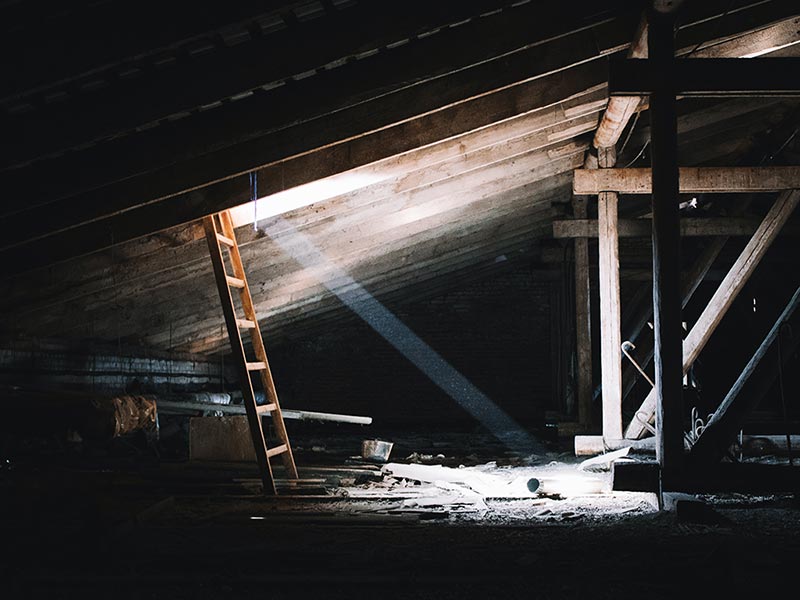What are the top asbestos risks in home retrofits and how can I mitigate them?
With two of the most talked-about themes in UK politics over recent years having been escalating energy bills and the intensifying climate crisis, it should be no great surprise that many owners of residential properties have also talked more and more about retrofitting.
The term “retrofitting” is typically used in reference to the practice of carrying out upgrades to an existing property to enhance its energy efficiency and drive down emissions. Examples of such work include putting in place roof, wall, and floor insulation, as well as installing more efficient heating and hot water systems, and fitting solar panels.
Indeed, retrofitting has become a major priority at government level. In March 2023, for instance, the UK Department for Energy Security and Net Zero (DESNZ) announced an award of £1.8 billion to improve the energy efficiency and lower the emissions of homes and public buildings across England.
You might be the owner of a domestic property yourself, with an interest in undertaking retrofitting projects like those mentioned above. But if you will be overseeing a home retrofit, and the property was constructed or renovated prior to the year 2000, you will need to be vigilant to the potential risks of asbestos. This naturally occurring mineral is a notorious carcinogen that was once widely incorporated into building products in the UK.
In this article, then, we will be setting out practical, expert advice on how you can identify and mitigate asbestos risks during a home retrofit.
What are the most common asbestos risks in home retrofits?
Today, the importation and use of all types of asbestos is against the law in the UK. It took until late 1999, however, for this final ban to be imposed, following years of progressively tightening legal restrictions on the use of the substance.
Asbestos was first commercially mined during the mid-19th century. However, the period from 1930 until around 1980 saw the particularly extensive use of building materials that happened to contain this fibrous silicate mineral.
So, if you own or are responsible for maintaining a residential building that was constructed or refurbished between those dates, asbestos could well be present in such areas as the insulating board, lagging around pipes and boilers, sprayed coatings, and cement roofing.
Given the frequently invasive nature of retrofitting work, there could be a risk in certain situations of the above asbestos-containing materials (ACMs) being disturbed. This, in turn, could lead to the release of harmful asbestos particles, which could then be breathed in by someone nearby.
The inhalation or ingestion of asbestos fibres is associated with a heightened risk of the exposed individual going on to develop a potentially fatal asbestos-related disease, such as mesothelioma or asbestos-related lung cancer. With approximately 5,000 deaths a year in the UK being attributable to asbestos even to this day, the risks of exposure to the substance are sadly not a mere “historical” concern.
How can I identify asbestos risks before starting work?
We have written in the past about how there may be certain visual signifiers of a given material in your building potentially containing asbestos. However, even having such a guide at hand can only enable you to spot suspected ACMs. To definitively confirm the true and accurate asbestos situation in your property, you will need to arrange for a professional asbestos survey to be carried out.
An asbestos survey is very much what it sounds like; a professional survey that seeks to determine the location, amount, and condition of any asbestos materials in a given property. There are two main types of asbestos survey – a management survey and a refurbishment or demolition survey. The latter is the more thorough and intrusive of the two types, which makes it the ideal form of survey to arrange prior to retrofitting work in your property.
When you are attempting to decide on a company to undertake a professional asbestos survey, various factors will need to be accounted for. These will include – as we have also previously written about – whether the surveying firm is accredited by an organisation such as the United Kingdom Accreditation Service (UKAS), as well as the surveyor’s training and experience.
What are the risks of not properly managing asbestos?
As we touched on above, severe health risks can be posed to workers and occupants of a particular building, if proactive and responsible measures are not put in place to manage the risks from ACMs in the property.
Although the UK’s present-day asbestos legislation – as set out by the Control of Asbestos Regulations 2012 (CAR 2012) – is largely directed at those who own and manage non-domestic premises, the owners of residential properties can still be subject to these obligations in certain ways.
Indeed, CAR 2012 is not only directed at non-domestic premises, as it can also apply to the common areas of domestic premises. By this, we are referring to such spaces as the foyers, lifts, and stairs in blocks of flats, as well as garages or parking spaces that are not allocated to any specific individual.
Furthermore, if you are a landlord of a residential property, and therefore have responsibility for maintaining the building’s structure, you will be classed as a “dutyholder” under CAR 2012. Any failure to meet the requirements of this duty could therefore put you at risk of serious legal and financial penalties.
If, for instance, a dutyholder fails to put in place an asbestos management plan, they could be fined as much as £20,000, or imprisoned for up to six months. A more serious breach of the asbestos regulations could lead to an unlimited fine and/or a prison sentence of two years.
How do I interpret asbestos survey results to assess risks?
Once the surveying work at your residential property is complete, you can expect a comprehensive asbestos report to be issued to you. This document should outline what asbestos materials were discovered to be present at your site, alongside photographs and recommendations on how to safely manage those ACMs.
This report – with its in-depth information encompassing general site and survey information, a bulk analysis report/table, details of the survey method used, and so on – should greatly help you understand the severity and condition of identified ACMs in your building. Those survey results, in turn, will guide your efforts to plan safe and effective retrofitting work at your home or domestic property.
This might mean steps need to be taken to “encapsulate” certain ACMs – a process whereby the materials are effectively “sealed off” from any risk of future disturbance. Alternatively, there may be a need to entirely remove ACMs that are judged to present a particularly great risk due to their condition and/or location.
What are the best practices for mitigating asbestos risks during removal?
One of the most powerful things that you can do to guard against asbestos risks in your home when ACMs are in the process of being removed, is ensure you have chosen a reputable and licensed asbestos removal professional to do the job in the first place.
As we have advised in the past, not all asbestos removal tasks necessarily strictly require the use of a professional who holds a licence from the Health and Safety Executive (HSE). However, if a given individual or organisation lacks a licence, it can be very difficult to be sure of their competency (and therefore, the safety of the asbestos removal work they carry out).
By contrast, if a particular professional or organisation does hold a HSE licence, this indicates that the regulator has deemed them sufficiently competent and knowledgeable to carry out all forms of asbestos remediation.
So, you can also expect a licensed asbestos removal specialist to know exactly what safe removal procedures and containment strategies to follow when they are taking ACMs out of your home. All the while, you can be sure of them constantly remaining in compliance with the UK asbestos regulations.
How can I minimise asbestos exposure risks during retrofit activities?
If you arrange for a contractor to come into your property to carry out potentially invasive retrofitting tasks, and your building dates to before the year 2000, it can be a good idea to check whether they have received asbestos awareness training. This training will be crucial for enabling them to adopt work practices that minimise the likelihood of any ACMs in your home being disturbed.
Such measures as maintaining the highest standards of cleanliness and arranging for continual asbestos air monitoring, will further help reduce any lingering asbestos risks during retrofitting, even if you have already removed or encapsulated certain ACMs in your home.
What can homeowners do to protect themselves, their families, and/or tenants?
From the start to the finish of any asbestos remediation and/or retrofitting projects at your domestic property, you should make sure you maintain clear and open communication with any contractors who undertake work at your property.
Such good-quality communication will help to ensure you are well-informed about project progress. It will also be instrumental in making sure any issues or risks are identified and addressed as early as possible.
You might have wondered whether it would be necessary for you to relocate during works carried out in your home that may present a risk of asbestos disturbance and/or exposure. This is another subject that we have addressed in the past, and your approach will depend on a number of factors. These will include the extent and location of any ACMs in your property, as well as the scope for disruption to your normal day-to-day activities.
If you are a landlord, you won’t be under any legal obligation to rehouse a tenant of yours while asbestos removal work takes place in the property where they live. However, if the tenant lacks an alternative place to temporarily relocate, and you do help rehouse them, this will likely be positive for your relationship with the tenant going forward.
Conclusion: be mindful of the top asbestos risks – and make sure you address them
Whatever retrofitting work you intend to have carried out at your home or other domestic property for which you may be a landlord, you should be aware of the asbestos risks that can occur if your building was built or refurbished before the year 2000. Alongside this, you will need to be well-informed on how you can mitigate such risks, in the interests of maintaining safety and legal compliance.
By turning to our own accredited and licensed asbestos professionals here at Oracle Solutions, you can go a long way to ensuring safety and thoroughness in your home retrofits. Please don’t hesitate to contact us to arrange your free and fast asbestos quotation.

Written by Mark Carter
Mark Carter is a renowned expert in asbestos management, offering clients vital guidance on compliance and safety. His expertise is invaluable for navigating asbestos regulations, ensuring both safety and legal adherence. Mark's role is central in providing effective asbestos-related solutions, helping clients achieve their business objectives with an emphasis on regulatory compliance and safety in asbestos management.

